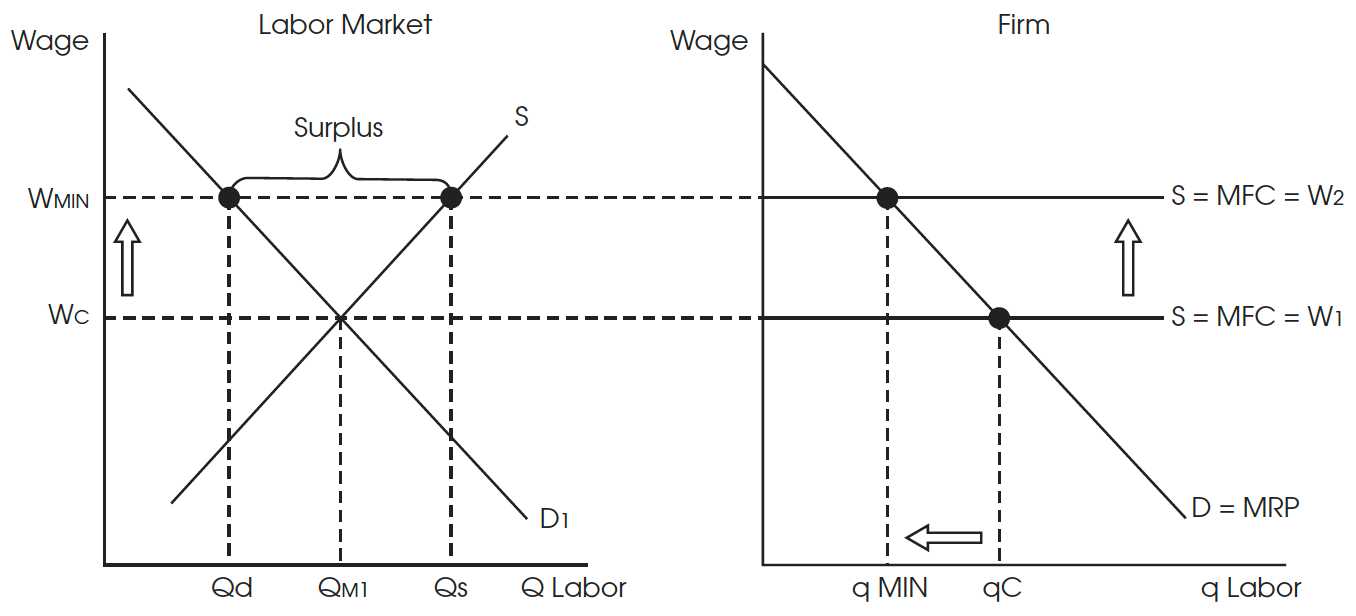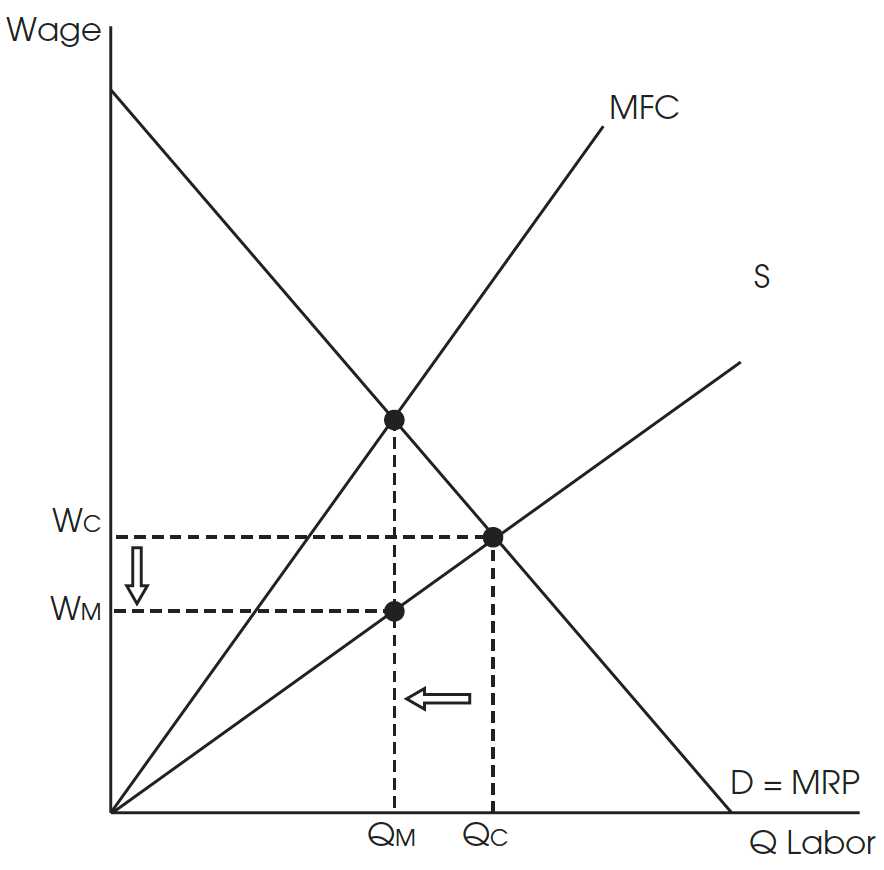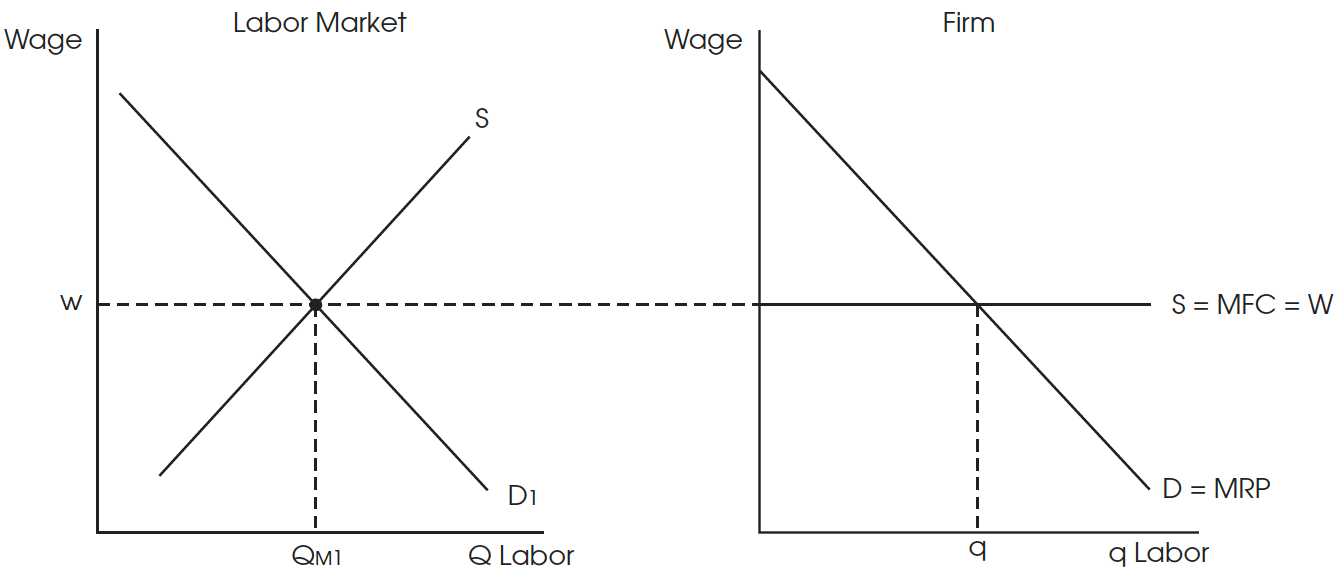Chapter 5 Factor Markets
• Derived demand – There is demand for the factors of production because this demand is derived from the goods that are produced by these inputs.
• 派生需求 企业的生产要素需求是从它向另一个市场供给物品的决策派生出来的。
• Marginal revenue product (MRP) is the addition to a firm's revenue when an additional input is employed.
• 边际生产收益 (MRP) 增加一单位生产要素说引起的收入增加量
• Marginal factor cost (MFC) is the additional cost of employing an additional input like a machine or worker.
• 边缘生产要素成本 增加一单位投入(如机器或工人)的额外成本
Perfectly competitive labor market 完全竞争劳动力市场
MRP = \dfrac{\Delta 总收入}{\Delta 资源数量} = MR × MP (完全竞争时 = P × MP)
MFP = \dfrac{\Delta 总成本}{\Delta 资源数量}(完全竞争时 =Wage)
• Firms in the perfectly competitive labor market are wage takers.
• 在完全竞争的劳动力市场上,公司都是工资接受者。
• MRP is the firm's downward-sloping labor demand curve.
• MRP 公司向下倾斜的劳动力需求曲线。
• MFC (wage) is the firm's horizontal labor supply curve.
• MFC (wage) 是公司的水平劳动力供给曲线。
• The profit-maximizing employer of labor would hire to the point where MRP = MFC.
• 劳动利润最大化的雇主会雇佣到 MRP = MFC 的点。
Minimum wage 最低工资

• 如果政府设定了有效的最低工资(价格下限),工资将会增加,但该劳动力市场和企业的雇佣数量将会减少。
Economic rent 经济租金
• 经济租金是对生产要素的支付,超过使用该要素所需的最低支付。
Monopsony 买方垄断
• Monopsony 是一个只有一个劳动力买主的市场

• 一个买方垄断公司有两个 upward-sloping curves, S 和 MFC.
• MFC > S 因为垄断者不能进行歧视。当它雇佣更多的工人时,它必须支付更高的工资给他们以及以前雇佣的其他工人。
• 劳动利润最大化的雇主会雇佣到 MRP = MFC 的点
• 相比与完全竞争的劳动力市场,买方垄断的公司雇佣更少的工人,支付更少的工资。
Changes in factor demand factor supply 生产要素曲线的移动
| 需求曲线的移动 | 供给曲线的移动 |
|---|---|
| 生产的产品需求 | 移民 |
| 生产效率 | 工人受教育的程度 |
| 替代资源的价格 | 工作条件 |
| 互补资源的价格 | 人口年龄分布 |
| 技术变革 | 对空闲时间的偏好 |
Least-cost rule 最小成本法则
\dfrac{要素L的边际产量}{要素L的价格} = \dfrac{要素C的边际产量}{要素C的价格}
价格不变
如果边际产量需要增加,就少买,如果需要减少,就多买。
当效用公式相等时,就达到了最佳组合












Comments | NOTHING